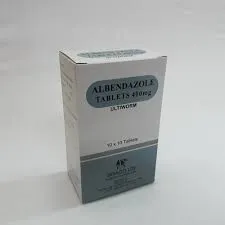- Afrikaans
- Albanian
- Amharic
- Arabic
- Armenian
- Azerbaijani
- Basque
- Belarusian
- Bengali
- Bosnian
- Bulgarian
- Catalan
- Cebuano
- Corsican
- Croatian
- Czech
- Danish
- Dutch
- English
- Esperanto
- Estonian
- Finnish
- French
- Frisian
- Galician
- Georgian
- German
- Greek
- Gujarati
- Haitian Creole
- hausa
- hawaiian
- Hebrew
- Hindi
- Miao
- Hungarian
- Icelandic
- igbo
- Indonesian
- irish
- Italian
- Japanese
- Javanese
- Kannada
- kazakh
- Khmer
- Rwandese
- Korean
- Kurdish
- Kyrgyz
- Lao
- Latin
- Latvian
- Lithuanian
- Luxembourgish
- Macedonian
- Malgashi
- Malay
- Malayalam
- Maltese
- Maori
- Marathi
- Mongolian
- Myanmar
- Nepali
- Norwegian
- Norwegian
- Occitan
- Pashto
- Persian
- Polish
- Portuguese
- Punjabi
- Romanian
- Russian
- Samoan
- Scottish Gaelic
- Serbian
- Sesotho
- Shona
- Sindhi
- Sinhala
- Slovak
- Slovenian
- Somali
- Spanish
- Sundanese
- Swahili
- Swedish
- Tagalog
- Tajik
- Tamil
- Tatar
- Telugu
- Thai
- Turkish
- Turkmen
- Ukrainian
- Urdu
- Uighur
- Uzbek
- Vietnamese
- Welsh
- Bantu
- Yiddish
- Yoruba
- Zulu
9 月 . 23, 2024 12:13 Back to list
Using Glutaraldehyde for Effective Sterilization in Medical and Laboratory Settings
Glutaraldehyde for Sterilization An Overview
Sterilization is a critical process in various fields, particularly in healthcare and laboratory settings, to eliminate or inactivate all forms of microbial life, including bacteria, viruses, fungi, and spores. Among the various methods used for sterilization, glutaraldehyde is a potent chemical agent known for its effectiveness as a disinfectant and sterilizing agent. This article explores the properties, applications, advantages, and considerations associated with the use of glutaraldehyde for sterilization.
What is Glutaraldehyde?
Glutaraldehyde is a colorless, strong-smelling liquid, classified as an aliphatic dialdehyde. It is widely used as a disinfectant and a fixative in biological specimens due to its ability to react with amino groups of proteins, leading to cross-linking. This property not only makes it effective for sterilization but also useful in preserving biological samples.
Mechanism of Action
The mechanism by which glutaraldehyde achieves sterilization is primarily through alkylation. The compound forms covalent bonds with proteins and nucleic acids, disrupting the cellular structure and function of microbes. This action effectively kills bacteria, viruses, and fungi. For optimal results, glutaraldehyde typically requires a contact time between 10 minutes to several hours, depending on the concentration of the solution and the type of microorganisms present.
Applications in Sterilization
Glutaraldehyde is predominantly used in the healthcare industry, particularly for sterilizing medical equipment that cannot withstand high temperatures, such as delicate surgical instruments, endoscopes, and other heat-sensitive devices. It is also employed in veterinary practices and certain laboratory environments where sterilization is essential. In addition to its use in sterilization, glutaraldehyde serves as a fixative in histology and pathology.
glutaraldehyde for sterilization

Advantages of Glutaraldehyde
One of the significant advantages of glutaraldehyde is its efficacy. At appropriate concentrations, it is a broad-spectrum disinfectant, capable of inactivating a wide range of pathogens, including resistant bacterial spores. Its compatibility with various materials, including plastics and metals, makes it an ideal choice for sterilizing complex instruments that other methods, such as autoclaving, cannot accommodate.
Furthermore, glutaraldehyde is relatively easy to use. It can be applied through immersion, spraying, or even in vapor form, providing flexibility in various settings. The storage and handling of glutaraldehyde solutions are straightforward, contributing to its widespread adoption.
Considerations and Safety Precautions
While glutaraldehyde offers many benefits, it is essential to recognize its potential hazards. Prolonged exposure to glutaraldehyde vapors can cause irritation to the eyes, skin, and respiratory system. Therefore, it is crucial to apply appropriate safety measures, including the use of personal protective equipment (PPE) such as gloves, masks, and goggles, during handling and application.
Moreover, the proper concentration of glutaraldehyde is vital for effective sterilization. Typically, a 2% solution is sufficient for high-level disinfection, while higher concentrations might be required for sterilization. Care should be taken to follow manufacturer guidelines and institutional protocols to ensure both efficacy and safety.
Conclusion
In summary, glutaraldehyde remains a valuable tool in the field of sterilization, especially for heat-sensitive medical instruments. Its effectiveness, versatility, and ease of use make it a preferred choice in many healthcare and laboratory environments. However, attention must be paid to safety considerations and proper handling techniques to mitigate the risks associated with its use. As we continue to advance in the quest for effective sterilization methods, glutaraldehyde will likely remain a significant player in ensuring a safe and sterile environment for medical practice and research.
-
The Power of Radix Isatidis Extract for Your Health and Wellness
NewsOct.29,2024
-
Neomycin Sulfate Soluble Powder: A Versatile Solution for Pet Health
NewsOct.29,2024
-
Lincomycin Hydrochloride Soluble Powder – The Essential Solution
NewsOct.29,2024
-
Garamycin Gentamicin Sulfate for Effective Infection Control
NewsOct.29,2024
-
Doxycycline Hyclate Soluble Powder: Your Antibiotic Needs
NewsOct.29,2024
-
Tilmicosin Premix: The Ultimate Solution for Poultry Health
NewsOct.29,2024













